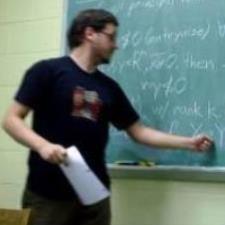
Paul K. answered • 11/19/21
Math PhD with a passion for sharing knowledge
To show a subset K of a group (R^2, +) is a subgroup, we need to show that K is non-empty and closed under inverses and the binary operation (+).
To show it is non-empty, consider the choice of x=y=0, the element (0,0). This is in K, so the set is non-empty. It is the additive identity of the set (R^2,+).
Now, suppose (x1 + y1, y1) and (x2 + y2, y2) are elements of K. The binary operation inherited by K and applied to these two elements is (x1 + y1, y1) + (x2 + y2, y2) = (x1 + y1 + x2 + y2, y1 + y2) = ((x1 + x2) + (y1 + y2), (y1 + y2)). Since x1, x2 are in R their sum is also in R. Likewise, y1, y2 are in Z so their sum is as well. Hence the set K is closed under the binary operation.
Finally, we need to show closure under inverse. Let (x +y, y) be in K. Consider (-x -y, -y) = (-x + (-y), -y). First, this is in K since if x+y is in R, -x -y = -(x+y) is in R. Similarly, since y is in Z it follows that -y is in Z. Now, observe that (x + y, y) + (-x - y, -y) = (x + y - x -y, y - y) = (0, 0). Furthermore, (0, 0) is the additive identity in K since (0, 0) + (a + b, b) = (a + b, b) for any (a + b, b) in K. Hence, K is closed under inverse.
Since K is non-empty, closed under the binary operation, and closed under inverse, it follows that K is a subgroup of (R^2, +).




